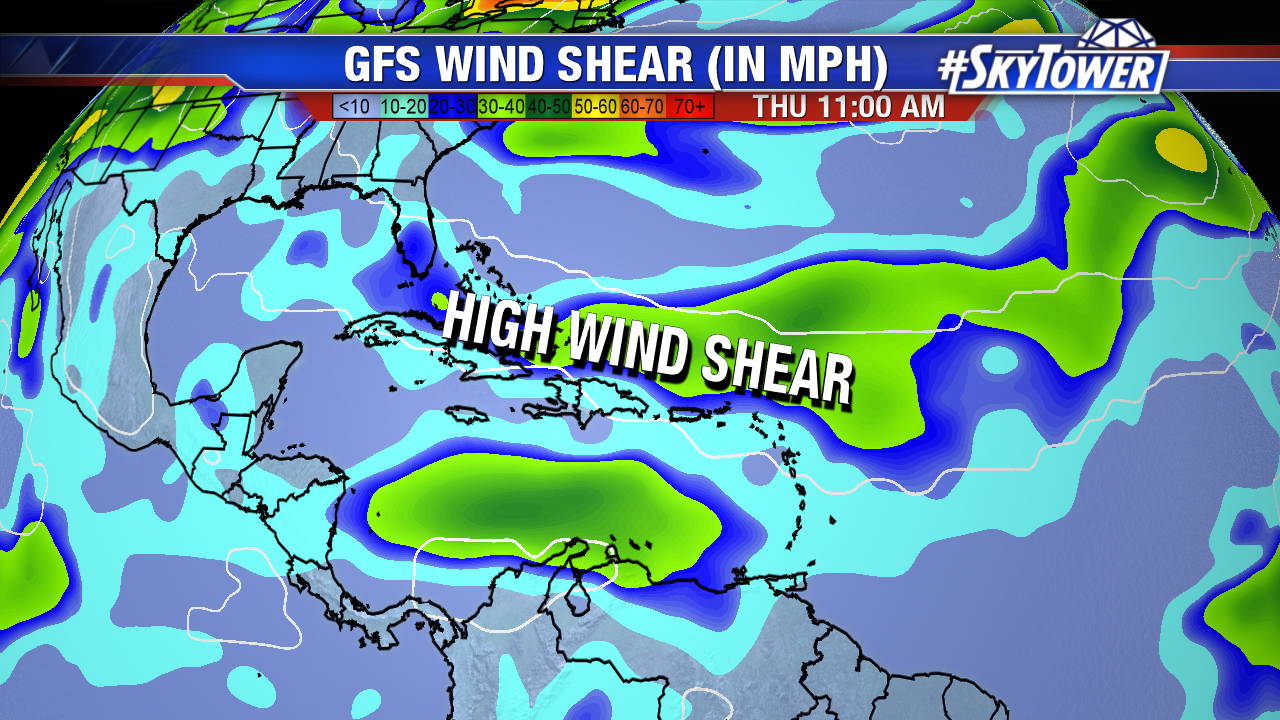The peak of the Atlantic hurricane season is right around corner, and right on cue, the tropics are starting to wake up. Heading into Labor Day Weekend we’re watching a tropical wave moving across the northern Caribbean Sea. This disturbance has been producing rounds of heavy rain across the Dominican Republic, Puerto Rico, and Leeward Islands over the last couple days.

So far, there isn’t any evidence of much organization. Any hint of development has been squashed by high wind shear – a battle that this disorganized area of showers and storms will continue to fight as it moves west-northwest toward the Bahamas and Florida over the next 3 days.

While we still have some model disagreement, there are signs that wind shear will lessen as this disturbance moves across Florida and into the eastern Gulf of Mexico early next week. As things stand right now, this looks to be a disturbance that will simply enhance daily rainfall coverage across Florida around Labor Day – an outcome that could lead to localized flooding in spots thanks to already soaked soil from recent heavy rains. Thereafter, it’s possible that a tropical storm could form as this moves away from Florida and heads toward the central Gulf Coast during the middle of next week.

We’re also watching a vigorous tropical wave coming off the coast of Africa. The National Hurricane Center has now tagged this as ‘Potential Tropical Cyclone Six’. Sitting well south of the dry Saharan Air layer, this area has a very favorable environment to work with and should become Tropical Storm Florence at some point in the next day or so. After moving across the Cape Verde Islands, it will head northwest into the open Atlantic. In all likelihood this storm stays well out to sea and will have no impact on the United States, but we’ll be monitoring its progress closely, regardless.

